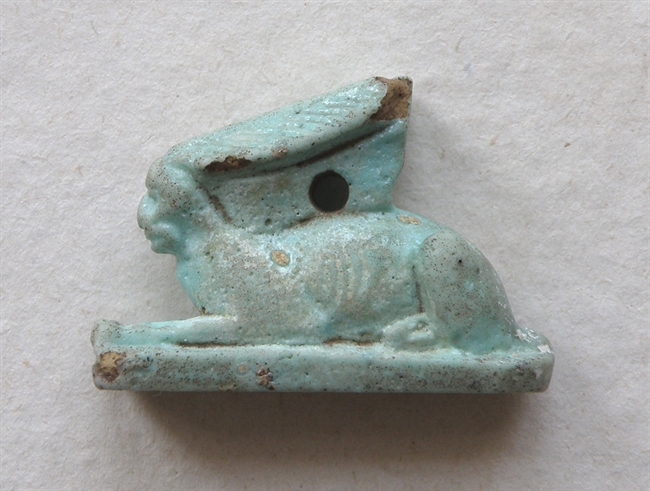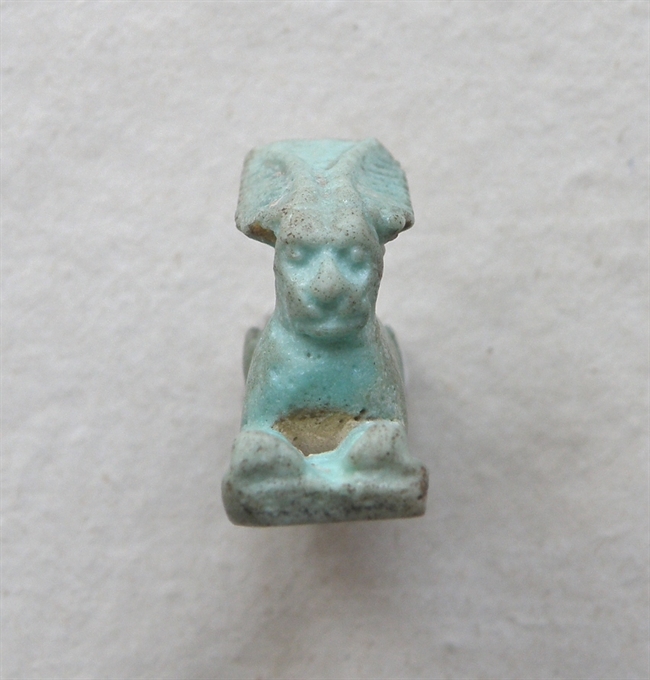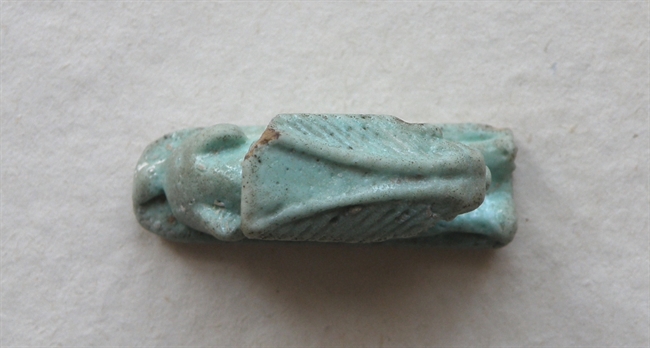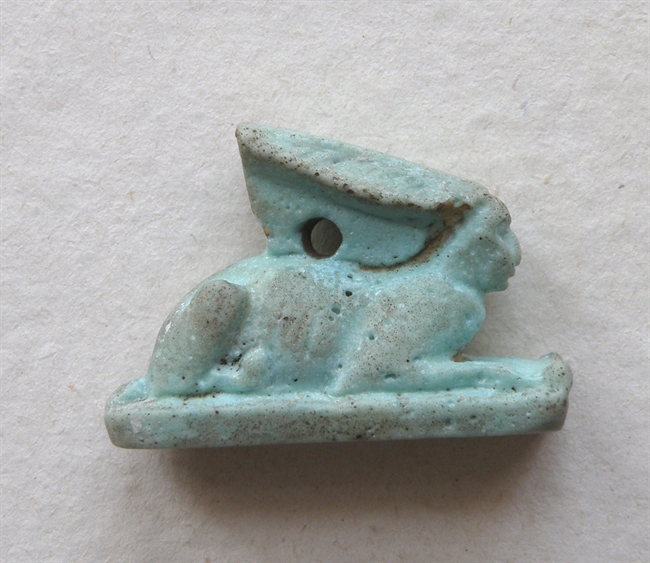Hare amulet
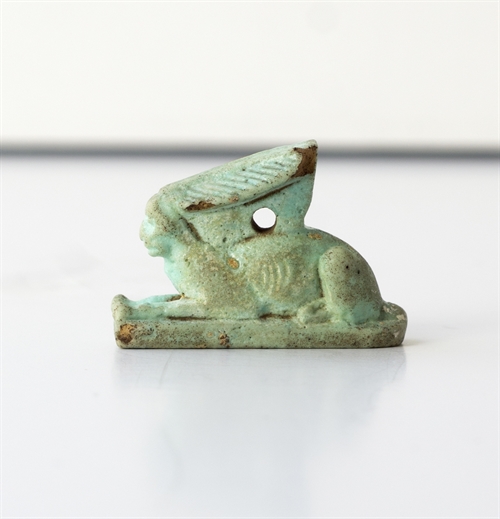
Blue-green faience amulet in the form of a hare. Hare amulet from the Egyptian collection of the Museum of Slavonia has almost lion-like muscles, barely resembling a hare. The animal is sitting like a sphinx, looking straight ahead. The face, reminiscent of a human, is detailed. Long ears, shaped by relief lines, are dominant and decorated with short, diagonal lines. Underneath the ears, there is a perforation for the amulet string.
Hare amulets were used not only for protection, but also for luck, blessing and patronship. It is a symbol of fertility, usually worn by women during life. In death, however, it was thought to bring the hope of rebirth. Phonetically, the hieroglyph of a hare was wn, representing the essence of life and symbol of Osiris.
Hare amulets were used not only for protection, but also for luck, blessing and patronship. It is a symbol of fertility, usually worn by women during life. In death, however, it was thought to bring the hope of rebirth. Phonetically, the hieroglyph of a hare was wn, representing the essence of life and symbol of Osiris.
Catalogue entry
Hare amulet
Museum of Slavonia, Osijek
inv. no. MSO AA-1344
unknown site
Late period (664-332 B.C.) - Roman period (30 B.C.-395 A.D.)
terracotta: modeling, carving, baking; faience: coating
2.2 x 2 x 1 cm
donation, Emerik Hild
Resources
- Kovač, Marina. „Egyptian Collection of the Museum of Slavonia in Osijek (Croatia)“. U: Tomorad, Mladen (ur.). A History of Research into Ancient Egyptian Culture conducted in Southeast Europe. Oxford, 2015: 93-105. no. 16, 104.
- Kovač, Marina. Ulaznica za drugi svijet. Egipatska zbirka Muzeja Slavonije - Ticket to the Afterlife. Egyptian collection of the Museum of Slavonia. Osijek, 2013. no. 4, 28-29.
- Perc, Bernarda. Beiträge zur Verbreitung ägyptischer Kulte auf dem Balkan und in den Donauländern zur Römerzeit : mit besonderer Berücksicksihtingung des Quellenmaterials aus dem Gebiet des heutigen Staates Jugoslawien. [Doktorska disertacija]. München, 1968. no. 49d, 203.
- Tomorad, Mladen. „The Ancient Egyptian Antiquities in Institutional and Private Collections in Croatia“. U: Tomorad, Mladen (ur.). A History of Research into Ancient Egyptian Culture conducted in Southeast Europe. Oxford, 2015: 31-58. 49.
- Tomorad, Mladen. „The Ancient Egyptian Collections in Croatia and the Project Croato-Aegyptica Electronica“. U: Derriks, Claire (ur.). Collections at risk: New Challenges in a New Environment - Proceedings of the 29th CIPEG Annual Meeting in Brussels, September 25-28, 2012, Royal Museums of Art and History Brussels, Belgium. Atlanta, 2017: 237-268. 256.
- Tomorad, Mladen. „The Egyptian antiquities in Croatia“. PalArch 2, 1 (2005): 1-33. 21.
- Tomorad, Mladen. „The phases of penetration and diffusion of Egyptian artefacts and cults in the region of Istria and Illyricum (from the 7th c. B.C. to the 4th c. A.D.)“. U: Györy, Hedvig (ur.). Aegyptus et Pannonia V. Budapest, 2016: 185-226 + Plates 69-81. 199-200.
- Tomorad, Mladen. Egipat u Hrvatskoj: egipatske starine u hrvatskoj znanosti i kulturi. Zagreb, 2003. 74.
- Tomorad, Mladen. Model računalne obrade i prezentacije staroegipatskih predmeta u muzejskim zbirkama u Hrvatskoj. [Doktorska disertacije, Filozofski fakultet u Zagrebu Sveučilišta u Zagrebu]. Zagreb, 2006. 29.
- Tomorad, Mladen. Staroegipatska civilizacija, sv. II: Uvod u egiptološke studije. Zagreb, 2017. 82.
